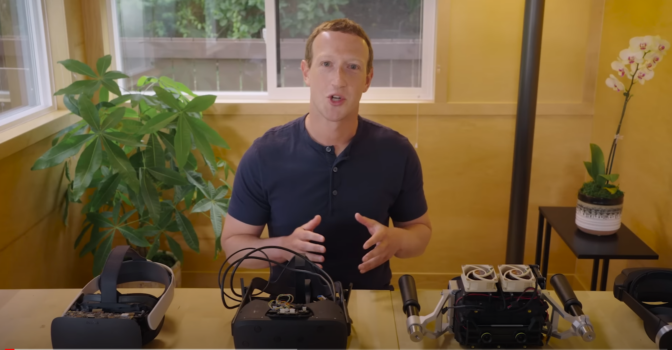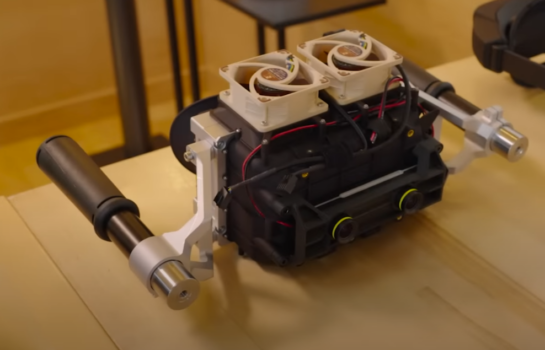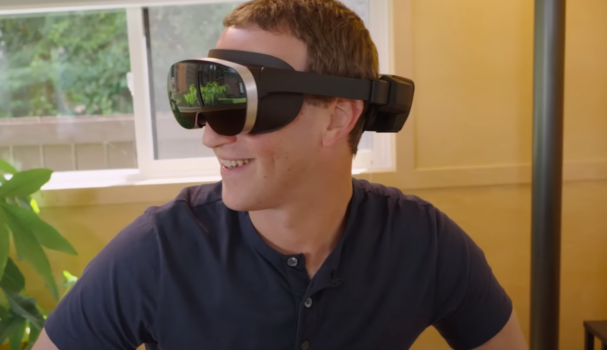Meta CEO Mark Zuckerberg showed off four new headset prototypes a few days ago that, he said, make virtual reality feel almost real.
The goal is to invent displays “that are as vivid and realistic as the physical world and much more advanced than traditional computer screens we use today,” Zuckerberg said in a YouTube video.

One of the prototype headsets had industry-leading resolution, a second had extra focal length, the third had depth of field, and the fourth headset combined several of these features into a single — but non-functional — light-weight prototype.
The global market for augmented reality and virtual reality headsets grew 92% last year with shipments reaching 11 million units, according to the latest IDC numbers. Meta’s Quest 2 headset was the most popular, according to IDC, with a 78% market share.
One of the reasons is that Meta has been investing significantly in virtual reality technology, starting with a $2 billion acquisition of the Oculus Rift in 2014. The company spent more than $10 billion on virtual reality last year and has promised to do the same for ten years. It’s well on its way to meeting that target this year, having spent $3.7 billion in the first quarter, according to the company’s latest earnings report.
But today’s virtual reality headsets have a lot to be desired. They’re uncomfortable to use, and the graphics quality means that the virtual reality doesn’t feel particularly real.
Meta is working to change that. According to Zuckerberg, the company is investing in improving resolution, increasing focal depth, reducing optical distortion, and improving dynamic range, in addition to making the headsets smaller and easier to wear.
Butterscotch prototype tackles resolution
Resolution refers to the number of pixels on the display. According to Zuckerberg, virtual reality headsets should have at least 60 pixels per degree of vision.
The headset prototype that features this level of resolution is called Butterscotch, he said.
“This prototype… lets you comfortably read the smallest letters on an eye chart,” he said.
Half Dome prototype tackles focal depth and distortion
Regular televisions and monitors are stationary. People only need to focus their eyes on one set distance.
But for virtual reality, people need to be able to focus on something close to them — and also to focus on something far away — in order for the environment to feel realistic. That’s hard to do with a static computer screen, but Meta thinks it has a solution.
“With varifocal and eye tracking tech, our Half Dome prototypes let you focus on any object at any distance,” Zuckerberg said.
Another company goal is to build a unit that can fix optical distortions extremely quickly.
Optical distortions are kind of like an fun-house mirror, where the center of the display makes the image look too fat or too skinny. One way to fix the problem is to pancake two sense — a fattening lens and the skinny lens on top of each other so that they cancel out.
Zuckerberg says that the problem can also be fixed with software, as long as corrections occur so quickly, Zuckerberg said, “that it’s imperceptible to the human eye.”
The Half Dome prototype also includes the distortion corrections, he said.
Starburst prototype tackles dynamic range
“Nature is often 10 or 100 times brighter than modern HDTVs,” said Zuckerberg. On a headset, “we need those colors to be just as vivid to feel realistic.”
For this they built Starburst, which, he said, is the world’s first high dynamic range virtual reality system.

All three of those prototypes are still very bulky and impractical, Zuckerberg admitted.
Holocake 2 prototype features sleek, lightweight design
The fourth prototype, called Holocake 2, is a lightweight headset that combines all the best features of the other three. However, currently it is just a mockup and doesn’t actually work.

“There’s still a long way to go,” Zuckerberg said.
Watch the full video below:
- Shanghai plans to spend big on the metaverse - August 31, 2022
- Facebook’s latest AI attempts to understand the world still fall short - July 11, 2022
- Meta shows off four 4 New VR headsets - July 2, 2022
